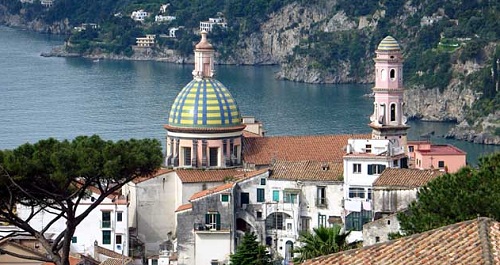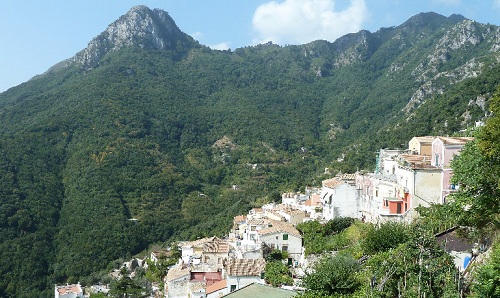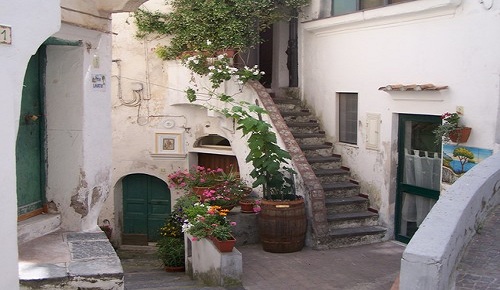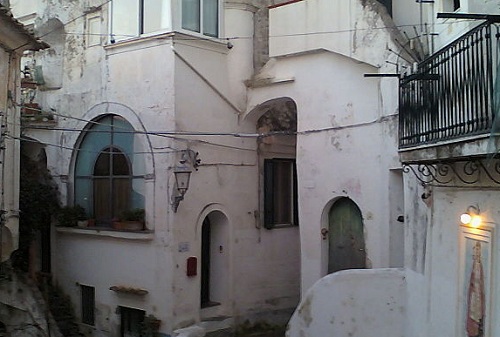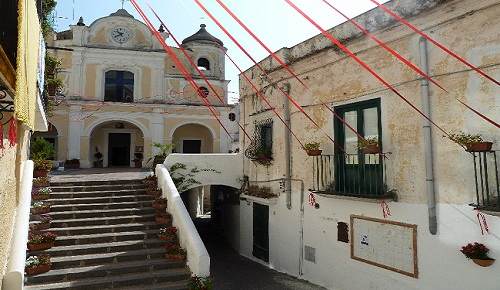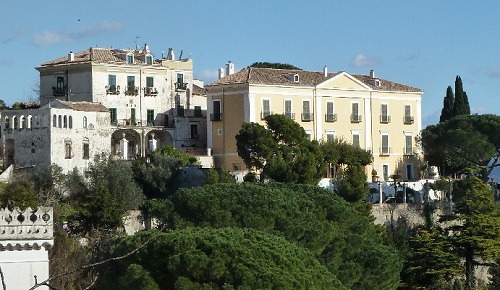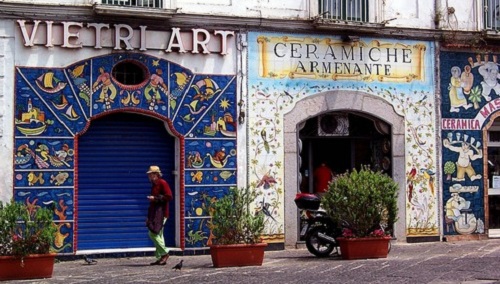
|
||||||||||||||||||||||||||||||||||||||||||||||||
|
||||||||||||||||||||||||||||||||||||||||||||||||
|
|
Albori
Vietri sul Mare ("Vietri on the Sea") is a seaside town along the Amalfi Coast in the province of Salerno, a popular tourist destination because it is a convenient place to start the Amalfi Coast drive.
The town is bordered by Cava de' Tirreni, Cetara, Maiori and Salerno. The quarter by the sea, named Marina di Vietri is located to the south of the town. Vietri is also the origin of dishes, flowerpots, vases and tiles found in restaurants, hotels and homes throughout the Amalfi area. The hamlet of Àlbori is located about 2 km from the center of Vietri sul Mare, 264 meters above sea level in an inlet that protrudes on the Amalfi Coast offering the visitor an enchanting spectacle.
On the origins of the village there are several theories, sometimes colored of legend: the most fascinating is that the name comes from Arvo, an argonaut in the wake of Giasone, ancient Greek mythological hero, attracted by the beauty of the place.
According to another tradition, the name may also have originated from the latin Arbores, meaning tree, as a reference to the aboundance of timber available in the area which was used by the Romans for building ships.
Legends aside, the town has Etruscan origins and played the important role of outpost for centuries on the sea for commercial traffics with the hinterland. Occupied by the Romans (there are numerous archeological artifacts from this period, unearthed in the village of Marina), during the Lombard domination it became a suburb of the city of Salerno. It then passed under the jurisdiction of the Benedictine Abbey of the Holy Trinity of Cava de' Tirreni and was district of the town of Cava until 1806, when it achieved self-government. The main resource of Albori is certainly its picturesque location, but worth a visit is the parish church dedicated to St. Margaret of Antioch located in the heart of the small village.
Sightseeing :
The Church of St. John the Baptist, built in the XVII century in late Neapolitan Renaissance style, features a single nave with a transept and a dome covered with majolica tiles. Outside stands a tall bell tower. The previous structure, dating from the X century, underwent several alterations over the centuries. Confraternity of the Annunciation and the Rosary, built in the XVII century, features a marvelous façade decorated with painted pottery; Church of the Madonna delle Grazie, in the district of Raito, which dates back to the XVI century; Church of Santa Maria delle Grazie, in the district of Benincasa; Palazzo Solimene, created after the Second World War by Paolo Soleri. Inside is preserved a large exhibition of contemporary ceramics; The former Palace Taiani with the picturesque dovecote tower, also used as a anti-Saracen pirate watchtower; The XVI century tower Crestarella, built on a rock and was part of the complex coastal defense system;
The defensive tower of Marina of Albori; Villa Guariglia, in the village of Raito, once property of the Ambassador of Italy Raffaele Guariglia, surrounded by a beautiful park full of Mediterranean vegetation. Today it houses the Museum of the Ceramics of Vietri and a Study Center entitled to "Raffaele Guariglia". During the summer months it hosts several concerts and cultural events.
The Museum of Ceramics of Vietri, housed in the Belvedere turret of Villa Guariglia in Raito, where typical examples of local pottery production and significant examples of ceramic of Campania, Calabria, Puglia and Liguria are on display; The artistic and industrial Museum, entitled to Manuel Cargaleiro, which follows an specific historical pattern similar to other museums of this kind, promoting the development of contemporary ceramic art, with particular reference to the traditions of Vietri and the relationship with other countries around the Mediterranean. The nearby district villages of Molina (named so for the presence of various water mills), Benincasa, Dragonea, Albori and Raito; The "due fratelli" ("two brothers"), two large rocks, similar to the more famous "Faraglioni" of Capri, that emerge from the waters near Marina and are connected various legends; The craftwork shops and ateliers that expose their bright and warm colored ceramic products, in typical Vietri style.
The Campania Region | The Provinces : Avellino | Benevento | Caserta | Napoli | Salerno | The islands | Amalfi Coast | Hamlets | Nusco | Cusano Mutri | Atrani | Castelabate | Furore |
|

|
||||||||||||||||||||||||||||||||||||||||||||||
|
||||||||||||||||||||||||||||||||||||||||||||||||
